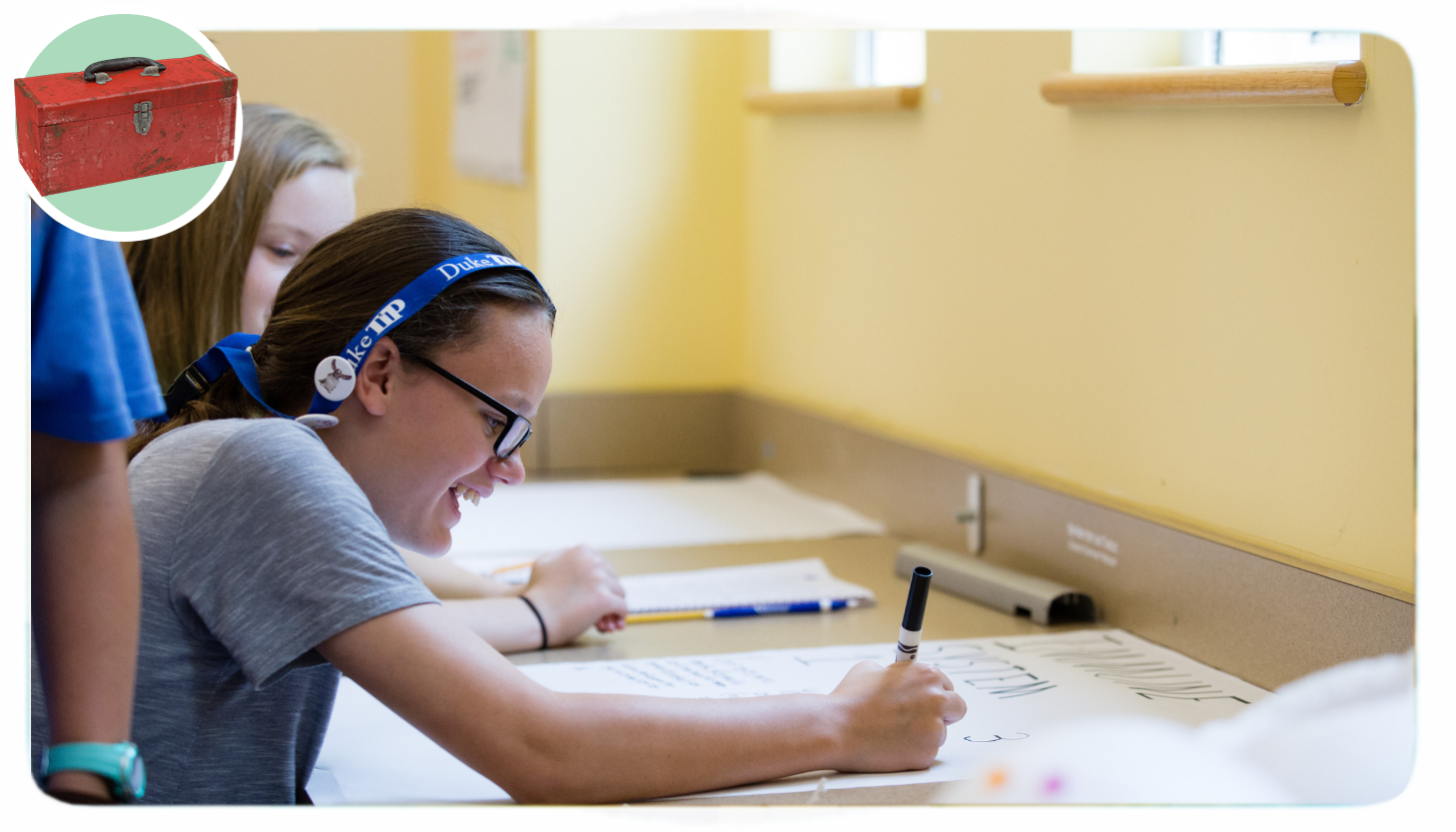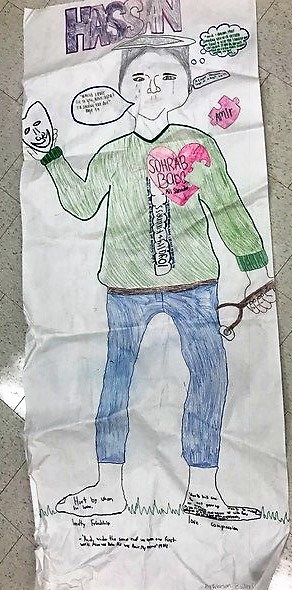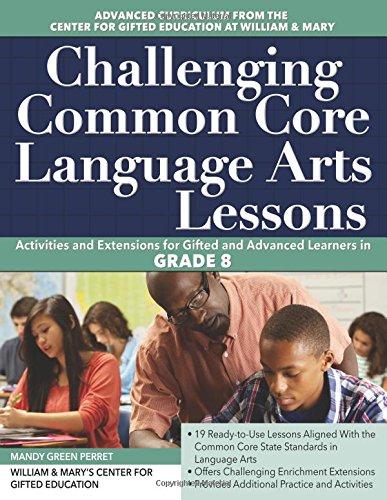
What is a Body Biography?
How can we get gifted and talented students to deepen their understanding of literary and historical characters? How can we bring together isolated facts and help students visualize and analyze the impact of a person on a story or a time period? A Body Biography is a way students can use images and writing to express that analytical and conceptual understanding of characters. Gifted youth are ready for the rigor of digging deep into concepts, metaphors, and high-level interpretations. This differentiated lesson activity provides a way for gifted students to get to the higher levels of Bloom’s Taxonomy.
This assessment can be used in multiple classes such as social studies, history, government/civics, English Language Arts, science, and religious studies, to name a few. This task allows groups of students to select key samples of text and use symbolic visuals to show their understanding of the person’s words, feelings, beliefs, and impact. The goal of a body biography is not only to illustrate the literal looks of a person, but to also make a thorough visual representation, using symbols, colors, quotations, and a body outline. As students choose the best words and images to explain the person, they must analyze how to represent the historical or thematic impact of this individual with a symbolic representation of the body.
How do you get gifted students to analyze historical figures or literary characters in depth?
How do students make a Body Biography?

8th grade gifted students analyzed Ponyboy from The Outsiders. 
Sophomore-level honors English students worked in groups to analyze Hassan in The Kite Runner.
To create the image outline, students can
- use butcher paper and outline a fellow student
- use a premade outline provided by you, the teacher
- or use digital tools to develop the image.
Each part of the body represents something.
- The spine represents the person’s values and beliefs
- The heart represents what they love or what means a lot to them
- The hands represent what they literally hold or what they hold dear
- Their feet represent where they came from and where they are going
- Their brain represents what they are thinking
- The mouth will speak quotes that represent the person’s typical speech as well as any other spoken aspects that students find important
- A mirror can be included to represent how the person sees themselves or how others see them (a mask can also be used)
- Ears show what others say about them
- Eyes show what they see or want to see
- Text–quotes from historical documents or literary documents–can be integrated in multiple places on the image, and not just presented near the mouth in speech bubbles. They can be integrated throughout the body outline and parts.
- Students can also can add or enhance items as they needed, such as
- a stomach to represent worries they have or worries others have about their choices
- the front to back to represent what is behind them and what lies in front of them
- literal or figurative objects from the person’s life
- clothing items that are typical of or symbolically representative of the person’s qualities
- any other body parts that help show a detailed understanding of the person and the role they play in history or in the text.
- Students should think about colors and what they represent
What is the person’s role?
This activity has two phases: a Planning Research Sheet, and Image Development, designed to help students understand why this person matters to history or the story. Through research and note-taking, followed by group conversations, gifted youth can get to the “big ideas” of a person’s impact by being selective about the details they share within the image. Gifted youth can develop a thesis, or Essential Understanding, about this individual.
Therefore students do not have to address every item listed above. What is key is ensuring that the details that students do choose are meaningful, cohesive, and connected to a larger understanding of the person’s role in history or in the story. View the first category of the rubric, Quotes: Role in Story or History, to think about the Essential Question students are answering: What is the person’s role in history or the story?
As they answer that driving question, students can gather facts about the person from various textual sources, whether primary or secondary historical sources, or from a literary text or secondary sources/literary criticism about that text. Students should share the research task within a group and each come to the task with a few pieces of evidence to discuss, and then have a discussion using each element of the body outline to see which evidence best fits each element.The combination of analysis of the person from multiple viewpoints as well as evaluating the sources to create words and visuals takes isolated facts and allows students to visualize and analyze the person throughout the story or time period.
How do you set up the assignment?
This project can be used for all students in a regular classroom or a gifted self-contained classroom. Group work or independent work is possible with this assignment. Students who need deeper challenge can research certain themes, impacts, or patterns/trends with their character and use additional body parts or visual and textual elements to render a deeper understanding.
You might assign students their person at the beginning of the unit so they can begin gathering ideas and information. This project works best in groups to develop deeper understanding and to compare/contrast what information each group member provides, in order to choose which words/images the group will use in the final product.
Materials for the Lesson
Here are some materials for assignment set-up.
- Planning Research Sheet. This document gets students researching and brainstorming. Students can complete this individually or in a group.
- Rubric. Review assignment standards using this document. You may want to lead a conversation to define what an “Essential Understanding” is when it comes to a character or historical figure. This is a great way to discuss how an interpretation or generalization is also a thesis statement, something students must render in essays. While the image doesn’t require a thesis statement, the later presentation invites students to attempt to express that argument or interpretation, which is why this exercise can be a a great formative assessment prior to writing.
- Note that there is space for you to set requirements for number of quotes, body parts, and symbols to be included.
- The options on the format and medium should be based on student choice as well as how much time is available to complete the assignment. Students can hand write everything and use the original drawing, or students can use digital tools and/or magazine images. Ask students for suggestions: it’s a great way to allow creative freedom and expression.
- Image Outline. If you don’t have time for students to create their own outline, use this one.
- My teacher resource book, Challenging Common Core Language Arts Lessons Grade 8, Lesson 2.4 also offers additional resources you can use.
How can it be used as an assessment?
An assessment such as this one can close a unit of literary or historical study unit to evaluate student learning utilizing benchmarks and standards, depending on your location. This assignment can be connected to standards related to citing evidence from primary and secondary sources and evaluate their roles in events. This assessment also highlights the C-3 curriculum concepts of gathering and evaluating sources and communicating and critiquing conclusions. It allows students to use words and images to show their complete evaluative and analytical analysis of their person or character. Rigor is increased with the use of individual resources, extended primary/secondary sources, and the creation of additional body parts or interpretation. It allows students to use creative learning while challenging their higher-order thinking skills. You may wish to use this as a formative assessment as well.
Let’s take a gallery walk
The use of a gallery walk is a great way for students share this information and for the class to ask what the Essential Understanding is about the person and their role in history or the story. Body Biographies can be placed around the room with a number. Students in their groups will spend a few minutes viewing the other body biographies and making notes and creating questions to ask the other groups about their body biographies. (I use note cards for each viewing).
After students have viewed all Body Biographies in a rotation, each group will have a chance to present to the class key details from the image as well as the Essential Understanding. The goal of other students listening can be to help presenters better articulate Essential Understandings, by asking questions. The rubric can be used as a guide for conversation if this task is formative, and it can also be used as the rubric for determining a final evaluation if you choose the task to be summative.
By the close of this assignment, students should see a whole cast of characters or historical individuals who made significant impacts within a narrative, whether fictional or historical.
How do you get gifted students to analyze historical figures or literary characters in depth? Share with us below!

Absolutely love this and not just for gifted students. I’m going to do it across my KS3 and try with bottom set year 10s for use with understanding the characters from An Inspector Calls. Thank you for the inspiration! Will share with colleagues and promote your book
Elaine-
Thank you so much for your kind words. Having to teach multiple grade levels each year, I love lesson ideas that can be adapted for all grades and interests. I am so excited you have a plan to use the body biographies with your class text.
Just stumbled across this. I love the idea and think it would be great for both GT and regular ed kids. Looking forward to adding it into an upcoming unit. Thanks!